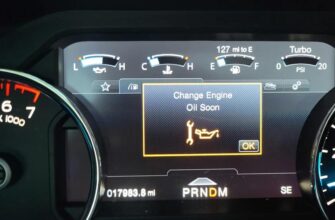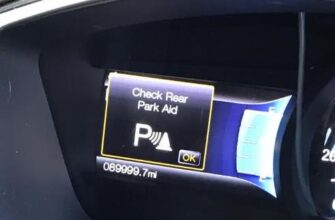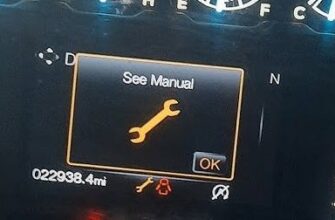If you drive a Ford truck or SUV, especially one equipped with their V8 engines from certain years, you might have heard the term “cam phasers” come up. And perhaps you’ve even experienced the tell-tale signs that they might be failing – that unsettling ticking or rattling noise, rough idling, or a noticeable lack of power. Many owners wonder, “what causes Ford cam phasers to go bad” in the first place, and what can be done about it?
Cam phasers are a key part of your Ford’s Variable Valve Timing (VVT) system. This clever technology allows the engine’s computer to adjust the timing of the intake and exhaust valves based on driving conditions. By changing when the valves open and close, the engine can optimize performance, fuel efficiency, and emissions across different RPMs. When the cam phasers malfunction, this precise timing is thrown off, leading to a variety of engine problems.
While Ford’s VVT system and cam phasers are designed to improve engine operation, they became a notorious issue in certain engines, particularly the 5.4L 3-valve Triton V8 used in many Ford F-150 trucks, Expeditions, and other vehicles from the mid-2000s through the early 2010s. However, problems aren’t limited to just those Ford 5.4 cam phaser problem years; other Ford engines with VVT can also experience similar issues.
The Root of the Problem: Why Ford Cam Phasers Fail
Several factors contribute to the premature wear and eventual failure of Ford cam phasers:
- Insufficient Oil Pressure and Flow: The VVT system, including the cam phasers, relies heavily on engine oil pressure to function correctly. The phasers use oil pressure to change their position and alter the camshaft timing. If there is low oil pressure, clogged oil passages, or insufficient oil flow within the engine, the phasers cannot operate properly. This is a major reason what causes Ford cam phasers to go bad after years of operation or if maintenance is neglected.
- Poor Oil Quality and Infrequent Changes: Using low-quality oil or failing to adhere to the recommended oil change schedule is detrimental to the entire engine, but it disproportionately affects the sensitive VVT system. Dirty or degraded oil doesn’t lubricate effectively and can cause sludge buildup, clogging the small oil passages that feed the cam phasers.
- Wear and Tear: Like any mechanical component exposed to constant movement and engine heat, the internal locking pins and springs within the cam phasers can wear out over time.
- Tensioner and Guide Issues: Problems with the timing chain tensioners or guides can lead to slack in the timing chain. This slack can cause the cam phasers to rattle and operate incorrectly, accelerating their wear.
- PCM Calibration Issues: In some cases, particularly with certain model years and engines, the factory Powertrain Control Module (PCM) calibration might have contributed to stress on the VVT system. Ford addressed some of these with software updates.
Symptoms of Cam Phaser Failure
Recognizing the signs of failing cam phasers can help you address the issue before it potentially causes more severe engine damage. Look out for these symptoms of cam phaser failure:
- Loud Ticking, Tapping, or Rattling Noise: This is often the most noticeable symptom. The noise typically comes from the top front of the engine (where the cam phasers are located) and might be more prominent at idle or certain RPMs. Many describe it as sounding like a diesel engine.
- Rough Idle: When the cam phasers aren’t maintaining the correct valve timing at idle, the engine can run unevenly.
- Reduced Engine Performance: Faulty cam phasers can lead to decreased horsepower and torque, noticeable as sluggish acceleration or poor throttle response.
- Poor Fuel Economy: An engine not running at optimal valve timing will often consume more fuel.
- Check Engine Light: Malfunctioning cam phasers often trigger a Check Engine light on your dashboard, usually accompanied by specific diagnostic trouble codes (DTCs) related to camshaft timing or VVT system performance (e.g., P0011, P0012, P0021, P0022). Addressing warning lights like the wrench light on a Ford promptly is always a good idea, as they often relate to powertrain issues.
How Long Can You Drive With Bad Cam Phasers?
This is a common and critical question. While some people may drive for a while with noisy cam phasers, it is not recommended to ignore the problem. Failing cam phasers indicate the VVT system isn’t working correctly, which puts increased stress on the timing chain, tensioners, and guides. Continued operation with worn phasers can lead to:
- Damage to the timing chain.
- Failure of timing chain tensioners and guides.
- Potential for the timing chain to jump a tooth, causing severe internal engine damage (bent valves, piston damage).
Ignoring the issue significantly increases the risk of a much more expensive engine repair or even complete engine failure. The severity of the noise and symptoms can sometimes give an indication, but there’s no guaranteed timeframe for how long a failing phaser will last before causing cascading damage.
“My Ford F-150 started making that notorious cam phaser rattle. Steve, 62, it sounded awful at idle. I was worried about How long can you drive with bad cam phasers. My mechanic advised getting it fixed sooner rather than later to avoid breaking the timing chain. It’s a known issue for these trucks.” – A Ford F-150 owner dealing with phaser noise.
Diagnosis and Repair: How to Check Cam Phasers and What to Expect
Diagnosing cam phaser issues typically involves:
- Listening to the Engine: A trained ear can often identify the distinctive cam phaser noise.
- Checking for Diagnostic Trouble Codes (DTCs): Scanning the PCM for VVT or camshaft timing related codes is a key diagnostic step. Understanding generic engine codes like the P0171 lean code can be helpful for basic diagnostics, but cam phaser issues usually have specific codes.
- Checking Oil Pressure: Verifying that the engine has adequate oil pressure at idle and higher RPMs is crucial, as low pressure can cause phaser issues.
- Using a Scan Tool: Advanced diagnostics involve using a scan tool to monitor VVT system operation and camshaft timing data in real-time.
Repairing faulty cam phasers typically involves replacing the phasers themselves. In many cases, especially on the affected 5.4L engines, it’s highly recommended to also replace the timing chain, tensioners, guides, and potentially the oil pump (upgrading to a higher volume pump) at the same time. This addresses the underlying causes of wear and prevents future related problems.
The replacement cost can be significant due to the labor involved. Accessing the phasers requires removing valve covers and potentially other components in the timing system area. Costs can range from well under $1000 for just the phasers on some engines to $2000-$4000 or more, especially on V8 engines like the 5.4L when including timing components and oil pump.
While there wasn’t a widespread Ford cam phaser recall covering all affected vehicles, Ford did extend the warranty on the cam phasers and other timing components for certain models and years due to the prevalence of the issue. Additionally, there have been Ford cam phaser lawsuit settlements that provided extended coverage or compensation for some owners who experienced failures. It’s worth researching if your specific vehicle is covered under any extended warranty or settlement.
Frequently Asked Questions (FAQ)
Q: What causes Ford cam phasers to go bad most often?
A: The primary causes are insufficient oil pressure, poor oil maintenance (infrequent changes, low quality oil), and wear and tear on the internal components of the phasers themselves.
Q: What are the main symptoms of cam phaser failure?
A: Common symptoms include a loud ticking, rattling, or knocking noise from the top front of the engine, rough idle, reduced engine performance, and a lit Check Engine light.
Q: How long can you drive with bad cam phasers?
A: It is not advisable to drive for long with bad cam phasers, as it can lead to more severe and expensive engine damage, including timing chain failure and internal engine damage.
Q: Are there any Ford cam phaser recall actions?
A: While there wasn’t a safety recall, Ford did issue extended warranties and service programs for certain models and years with VVT issues. There have also been settlements from Ford cam phaser lawsuit actions that provided additional coverage.
Q: What models/years are most known for cam phaser problems?
A: The 5.4L 3-valve V8 engine used in many Ford F-150s, Expeditions, and other vehicles from roughly 2004-2013 is particularly known for cam phaser issues, but other Ford engines with VVT can also be affected.
Conclusion
Failing cam phasers are a known issue for many Ford owners, often causing concerning noises and impacting engine performance. Understanding what causes Ford cam phasers to go bad – primarily issues related to oil pressure, maintenance, and component wear – is key to prevention and timely repair. Recognizing the symptoms of cam phaser failure and addressing them promptly is crucial to avoid more significant engine damage. Replacement cost can be substantial, delaying the repair is likely to be even more expensive in the long run. If you suspect your Ford has failing cam phasers, consult a qualified mechanic for diagnosis and repair options to keep your engine running smoothly.








